Charon, Moon Of Pluto, Observed By NASA's New Horizons Probe Just Before Closest Approach On This Day

Charon, moon of Pluto, observed by NASA's New Horizons probe just before closest approach on this day in 2015. (It flew within 12,500 km of Pluto and as close as 27,000 km to Charon.)
More Posts from Epic-flight and Others

The sun sets on Mars, April 15, 2015, observed by the Mars Curiosity Rover stationed at Gale Crater. (NASA/Jet Propulsion Laboratory)

Another oldie from my draft folder. I’d like to do a mass deletion of 99% of my unposted drafts.
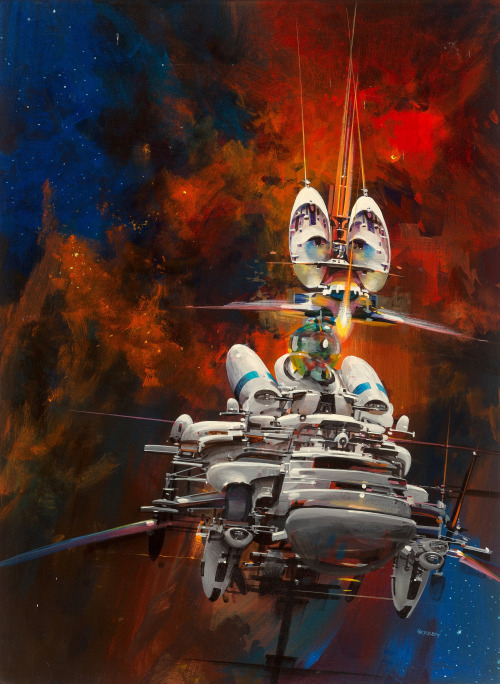
JOHN BERKEY Unknown Casein/Acrylic
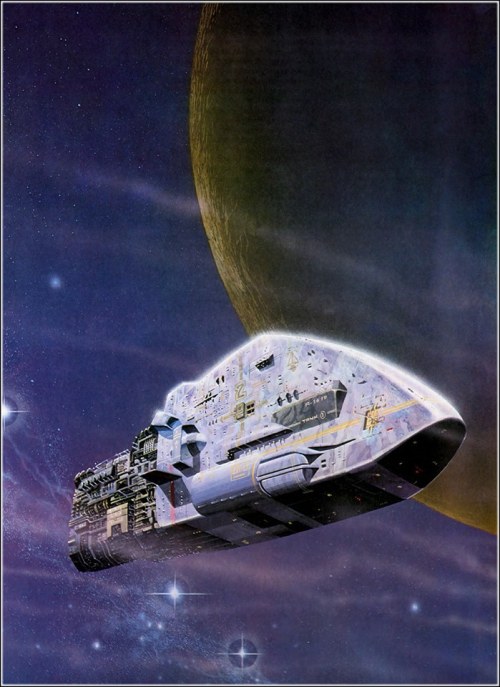
Angus McKie

'plane-view'
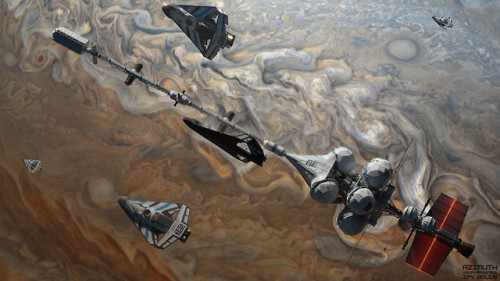
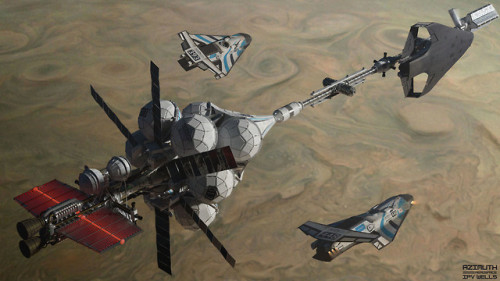
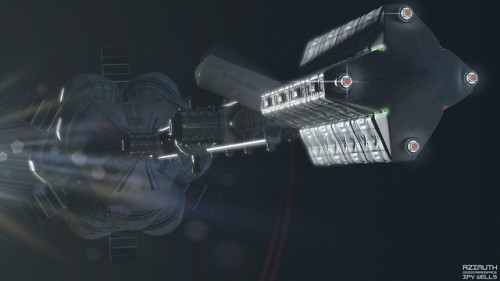

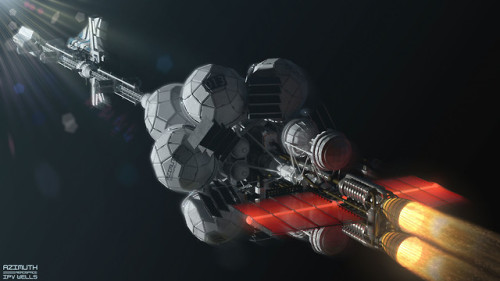
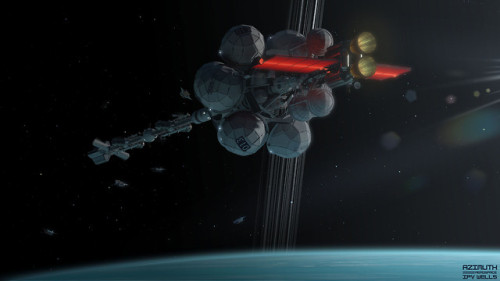

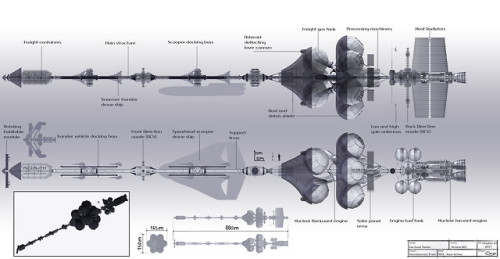
Wells-class interplanetary vehicle - Sergio Botero
“By the dawn of the XXII century, humanity’s thirst for Deuterium and Anti-Deuterium became so immense that companies began harvesting raw Hydrogen from the gas and ice giant planets. For that purpose, thousands of interplanetary spaceship tankers that work as refineries were built in order to transport the collected gas from the atmospheres of those planets to space stations over Earth, the Moon and other locations in the Solar System.“

O_o When we peer deep into space, we don’t expect to find something staring back at us…
This galactic ghoul, captured by our Hubble Space Telescope, is actually a titanic head-on collision between two galaxies. Each “eye” is the bright core of a galaxy, one of which slammed into another. The outline of the face is a ring of young blue stars. Other clumps of new stars form a nose and mouth.
Although galaxy collisions are common most of them are not head-on smashups like this Arp-Madore system. Get spooked & find out what lies inside this ghostly apparition, here.
Make sure to follow us on Tumblr for your regular dose of space: http://nasa.tumblr.com

Hubble Sees a Star Called HBC 672 and the Bat Shadow : A young star’s unseen, planet-forming disk casts a huge shadow across a more distant cloud in a star-forming region. (via NASA)

USS Sulaco Military Starship
Movie: Aliens UI Design: Fantasy II Film Effects, L.A. Effects Group, Stan Winston Studio
-
 thefatdood liked this · 8 months ago
thefatdood liked this · 8 months ago -
 ruinsofanearthquake liked this · 9 months ago
ruinsofanearthquake liked this · 9 months ago -
 epic-flight reblogged this · 1 year ago
epic-flight reblogged this · 1 year ago -
 fivestrandbraid liked this · 1 year ago
fivestrandbraid liked this · 1 year ago -
 baddestvenus-in-virgo liked this · 1 year ago
baddestvenus-in-virgo liked this · 1 year ago -
 elevenpasthehour liked this · 2 years ago
elevenpasthehour liked this · 2 years ago -
 buzzzz1964 reblogged this · 2 years ago
buzzzz1964 reblogged this · 2 years ago -
 buzzzz1964 liked this · 2 years ago
buzzzz1964 liked this · 2 years ago -
 neyennnn reblogged this · 2 years ago
neyennnn reblogged this · 2 years ago -
 sightsofspace reblogged this · 2 years ago
sightsofspace reblogged this · 2 years ago -
 ivebeentotheforest liked this · 2 years ago
ivebeentotheforest liked this · 2 years ago -
 antistae reblogged this · 2 years ago
antistae reblogged this · 2 years ago -
 thlastofus reblogged this · 2 years ago
thlastofus reblogged this · 2 years ago -
 yuniper reblogged this · 2 years ago
yuniper reblogged this · 2 years ago -
 theentsaregoingtowar liked this · 2 years ago
theentsaregoingtowar liked this · 2 years ago -
 dante5043 liked this · 2 years ago
dante5043 liked this · 2 years ago -
 alien--agent liked this · 2 years ago
alien--agent liked this · 2 years ago -
 justanoldfashiontumblog liked this · 2 years ago
justanoldfashiontumblog liked this · 2 years ago -
 stafylos01 reblogged this · 2 years ago
stafylos01 reblogged this · 2 years ago -
 nessieac liked this · 2 years ago
nessieac liked this · 2 years ago -
 dennamicamsm liked this · 2 years ago
dennamicamsm liked this · 2 years ago -
 raystxntz reblogged this · 2 years ago
raystxntz reblogged this · 2 years ago -
 chicyclist reblogged this · 2 years ago
chicyclist reblogged this · 2 years ago -
 chicyclist liked this · 2 years ago
chicyclist liked this · 2 years ago -
 loracarol liked this · 2 years ago
loracarol liked this · 2 years ago -
 the-planet-thief liked this · 2 years ago
the-planet-thief liked this · 2 years ago -
 seasidefanasties reblogged this · 2 years ago
seasidefanasties reblogged this · 2 years ago -
 seasidefanasties liked this · 2 years ago
seasidefanasties liked this · 2 years ago -
 optimisticparadisebouquetme liked this · 2 years ago
optimisticparadisebouquetme liked this · 2 years ago -
 confluencechimera liked this · 2 years ago
confluencechimera liked this · 2 years ago -
 space-shuttle-discovery reblogged this · 2 years ago
space-shuttle-discovery reblogged this · 2 years ago -
 possessedintrepid reblogged this · 2 years ago
possessedintrepid reblogged this · 2 years ago -
 holydinosaurscollagelight liked this · 2 years ago
holydinosaurscollagelight liked this · 2 years ago -
 clpete liked this · 2 years ago
clpete liked this · 2 years ago -
 possessedintrepid liked this · 2 years ago
possessedintrepid liked this · 2 years ago -
 parisappalachia reblogged this · 2 years ago
parisappalachia reblogged this · 2 years ago

